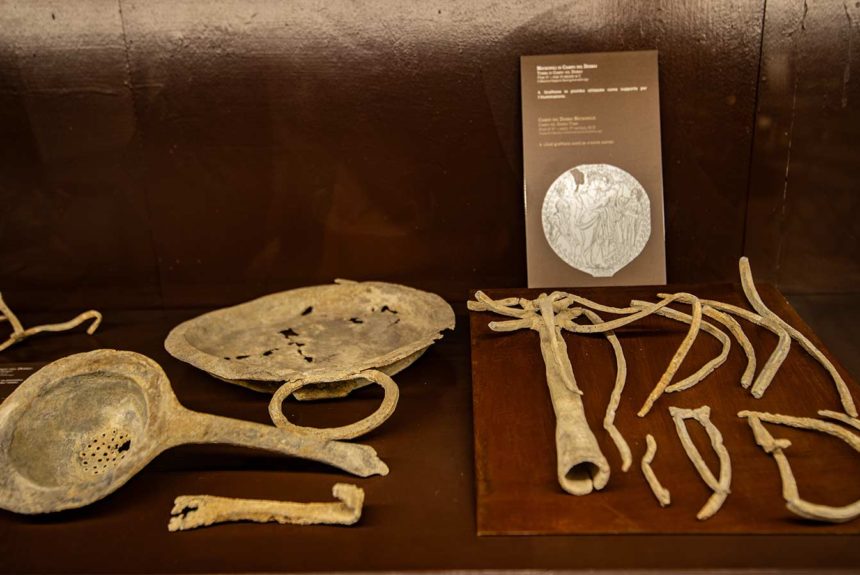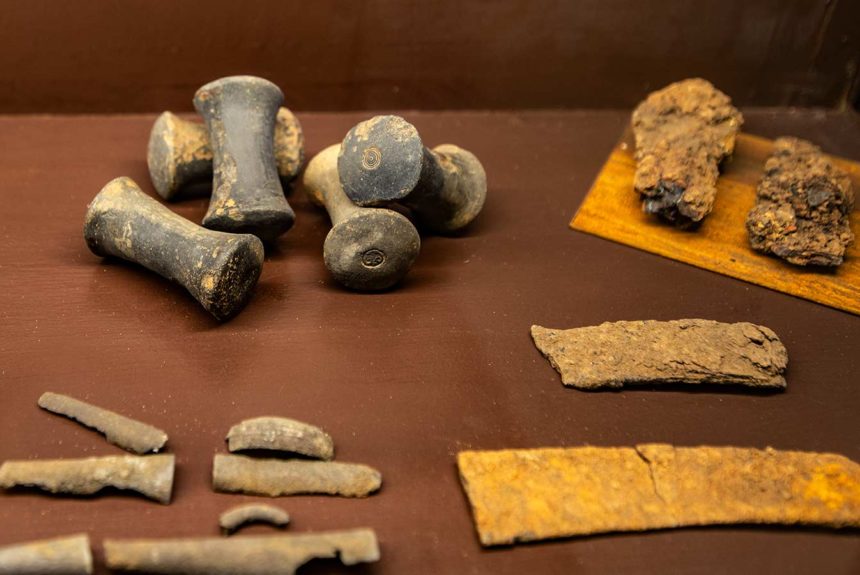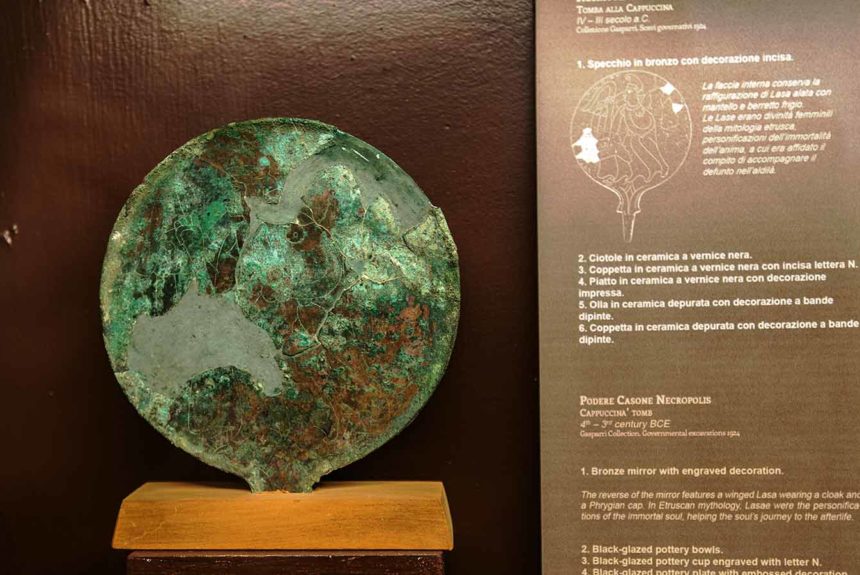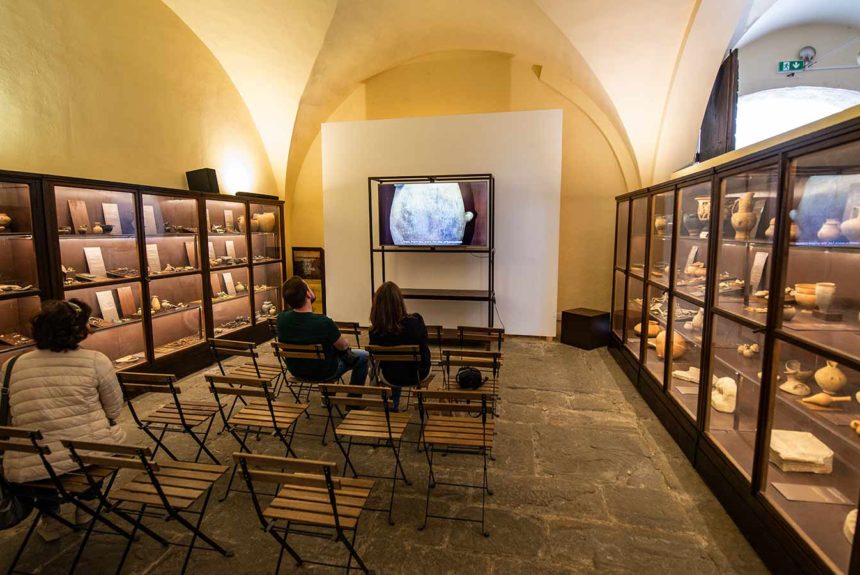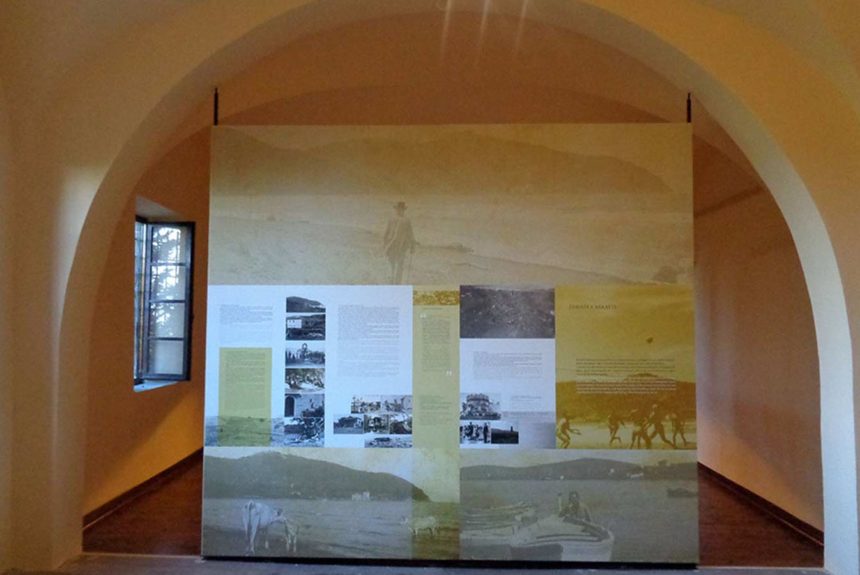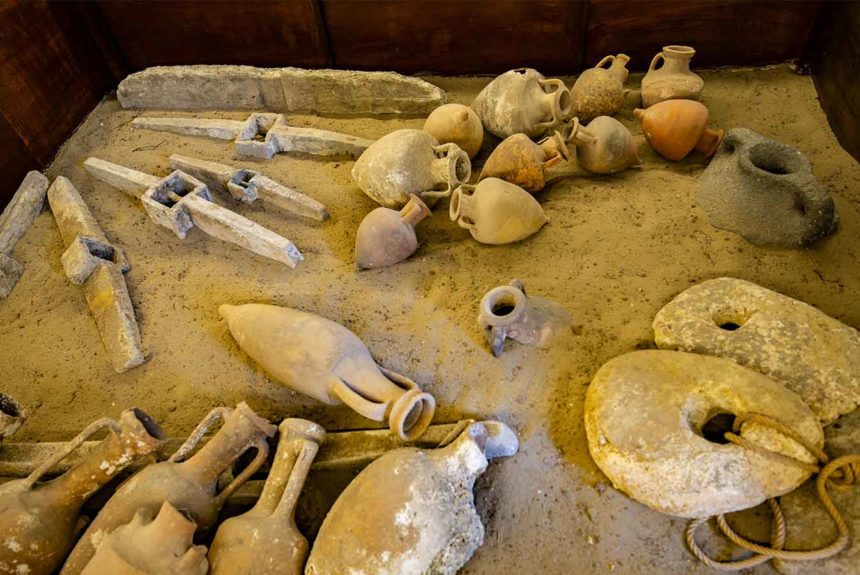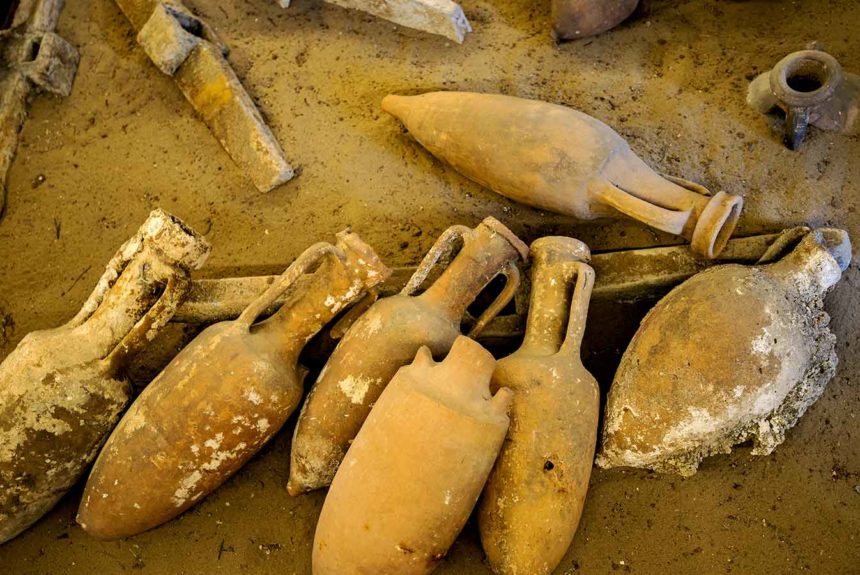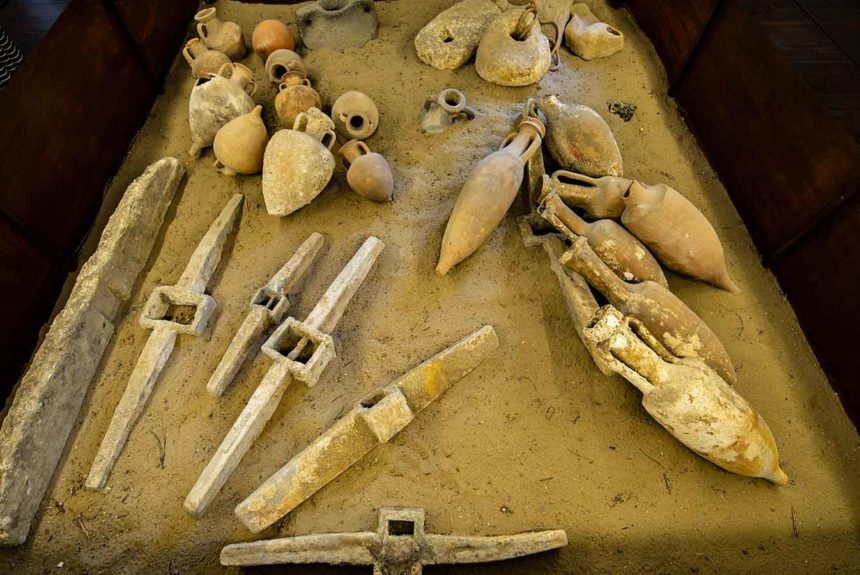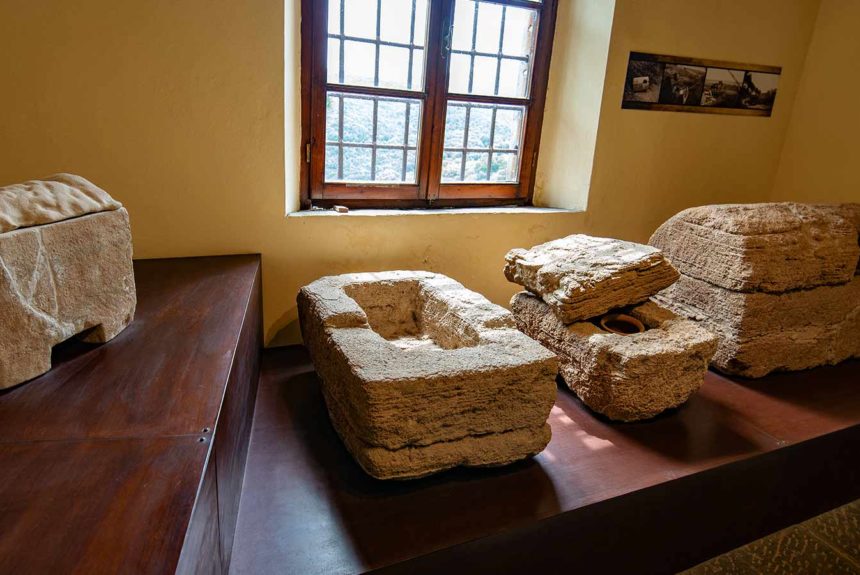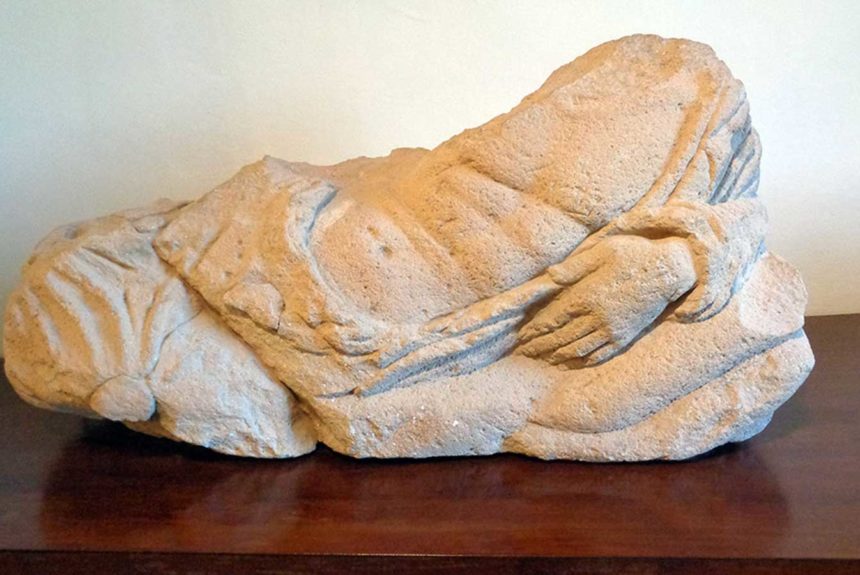Le Sale
In 2015, the museum was completely reconceptualized and reorganized according to modern standards of exhibitions, museology, and accessibility. The new exhibition is the result of an attentive study which allowed for the reuniting of objects coming from various tombs and archaeological contexts. As a result, the museum retraces the history of the Etruscans of Populonia through the remains of their material culture, or rather the very objects which they used on a day-to-day basis.
SALA 1
The displays of the first room of the Etruscan Museum of Populonia feature Etruscan burial goods from various tombs which are currently visible in the Archaeological Park of Baratti, as well as others which emerged during mining activities decades ago. A large panel recounts the story of the museum and its collection, property of the Gasparri family, while a large poster illustrates the places referred to the exhibition.
SALA 2
The visit continues with a collection of archaeological finds which emerged during urban planning works at Villini, offering the opportunity to draw upon the archive photos and documents which recount the history of beachside tourism, for which the Gulf of Baratti has been famous since the end of the 1800s. This is a story at the heart of Populonia’s current economy, which unites the sea with cultural tourism, between archaeology and territory.
SALA 3
Populonia, the only true Etruscan city on the sea, emerges as a result of its connection with the Mediterranean in this modern and evocative installation. Displayed here are finds discovered beneath the sea itself: Etruscan and Roman amphorae, stone and lead anchors, a millstone made of volcanic stone. The world of merchants, of ancient mariners, and the life of the port are suggested to visitors by material culture objects placed in dialogue with one another. As a result, underwater archaeology offers a snapshot of the past.
SALA 4
A glimpse into funerary archaeology, the most direct route for investigating the very life and mentality of the Etruscans: cippi of various typologies, sarcophaguses and a tomb “alla cappuccina”. This part of the exposition intentionally maintains the original antiquarian character of the museum, including archaeological finds which, collected outside of their context, are arranged in chronological order and grouped by function and typology. Among the most interesting and significant objects are a sculpted sarcophagus lid depicting the deceased in a semi-reclined pose, a sculpted head of volcanic stone, ornaments and furnishings in bronze, vases of Etruscan production and pottery imported from all over the Mediterranean basin.
Rimani aggiornato
Iscriviti
Ricevi aggiornamenti via e-mail sulle nostre mostre, eventi e molto altro:

